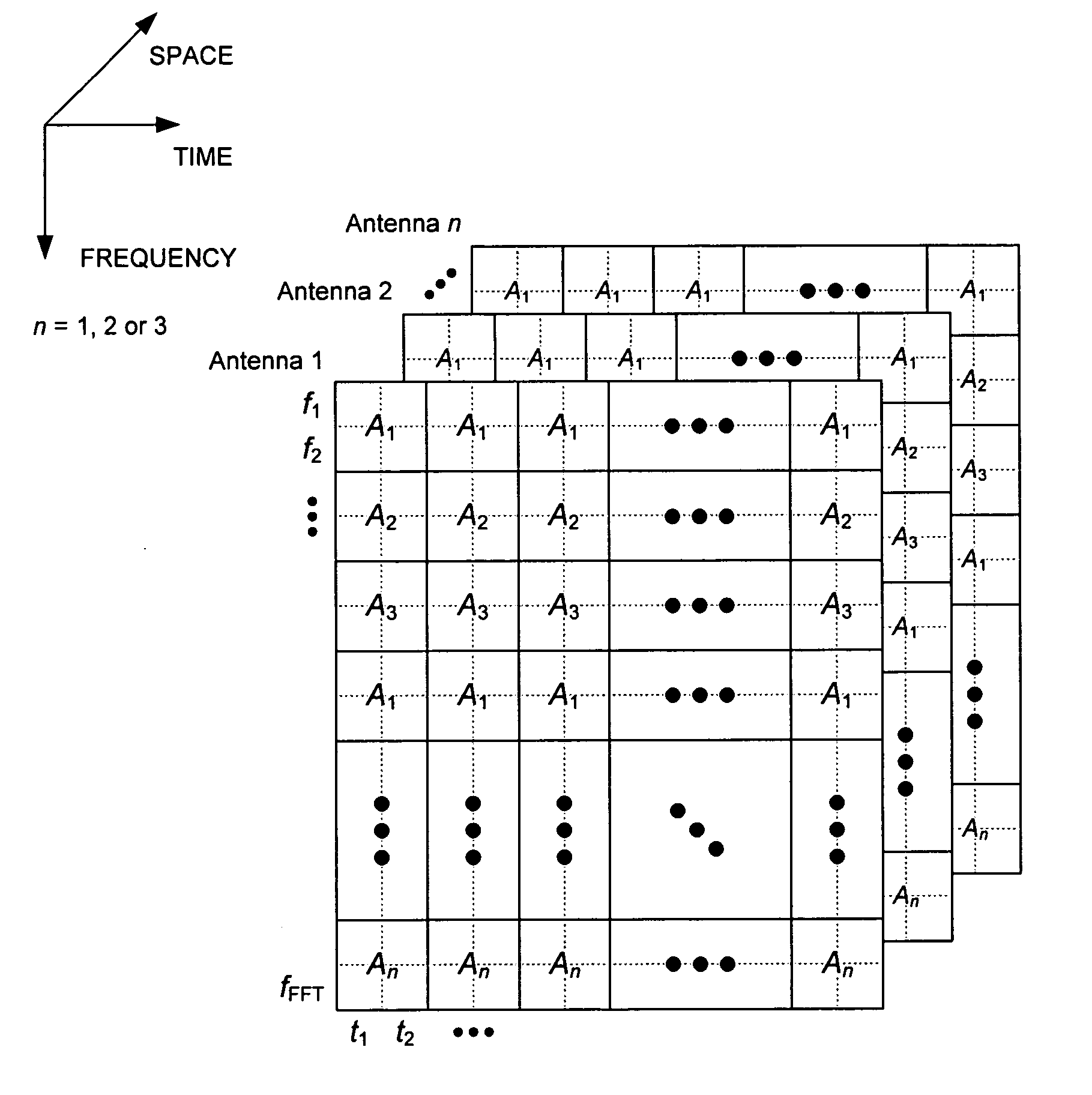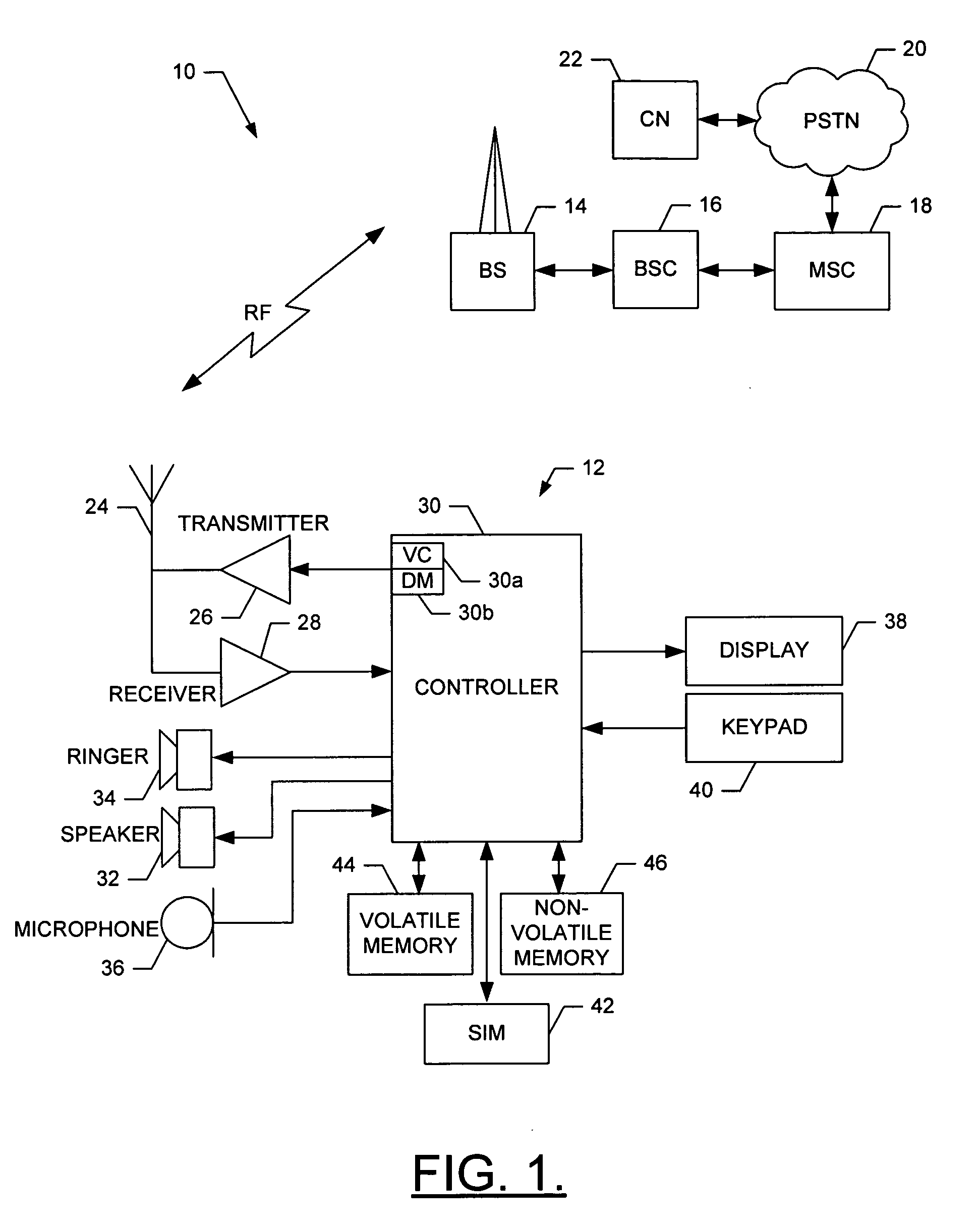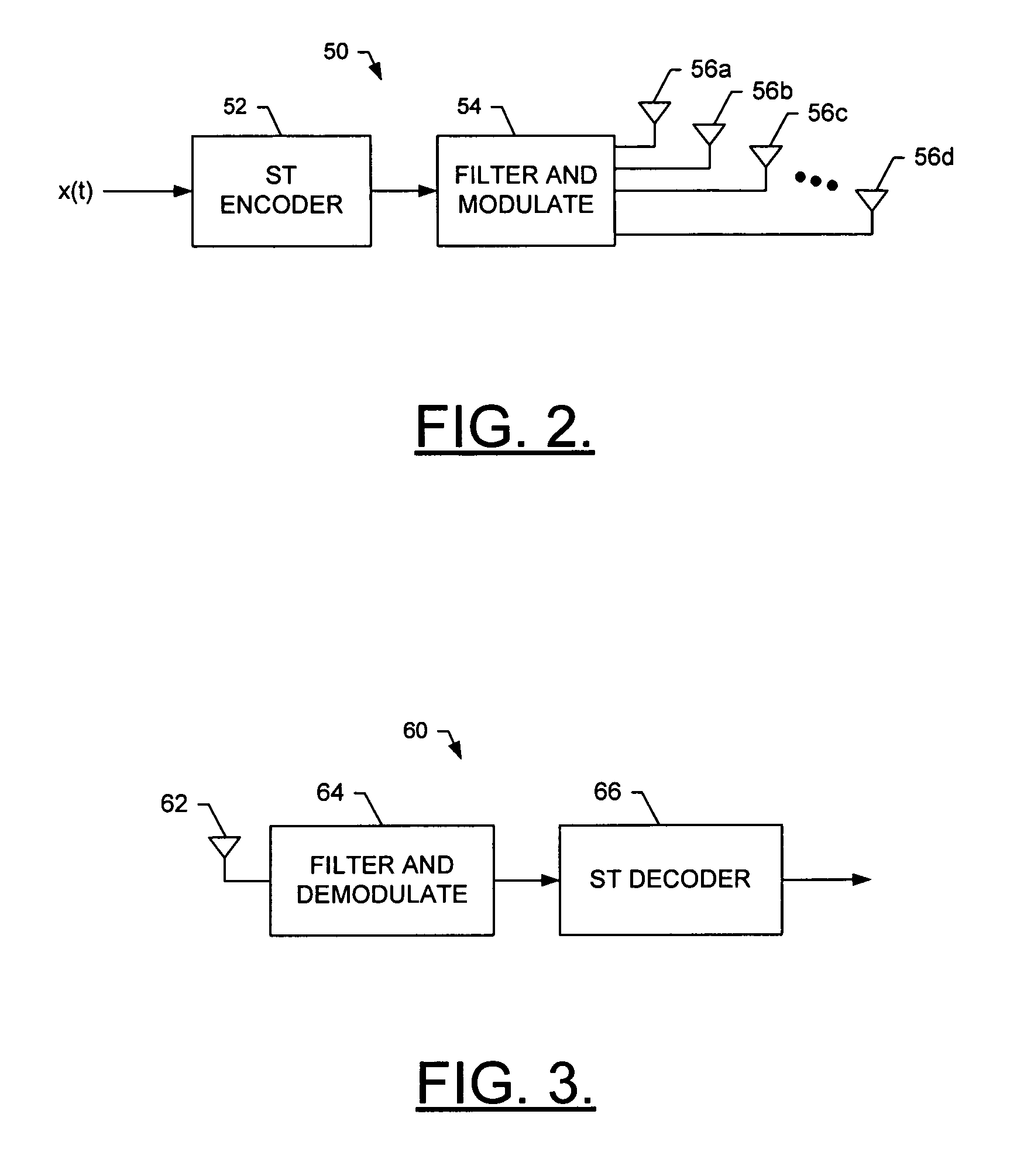System and method for space-time-frequency coding in a multi-antenna transmission system
a multi-antenna transmission and space-time frequency technology, applied in the field of multi-antenna transmission systems and methods for space-time-frequency coding signals, can solve the problems of fading of received signals, affecting the design of mobile terminals, and the increasing demands of wireless system design in relation to equipment, so as to increase the diversity and coding gain, and increase the performance of the communication system
- Summary
- Abstract
- Description
- Claims
- Application Information
AI Technical Summary
Benefits of technology
Problems solved by technology
Method used
Image
Examples
Embodiment Construction
[0024] The present invention now will be described more fully hereinafter with reference to the accompanying drawings, in which preferred embodiments of the invention are shown. This invention may, however, be embodied in many different forms and should not be construed as limited to the embodiments set forth herein; rather, these embodiments are provided so that this disclosure will be thorough and complete, and will fully convey the scope of the invention to those skilled in the art. Like numbers refer to like elements throughout.
[0025] Referring to FIG. 1, an illustration of one type of wireless communications system 10 including a terminal 12 that would benefit from the present invention is provided. As explained below, the terminal may comprise a mobile telephone. It should be understood, however, that such a mobile telephone is merely illustrative of one type of terminal that would benefit from the present invention and, therefore, should not be taken to limit the scope of th...
PUM
 Login to View More
Login to View More Abstract
Description
Claims
Application Information
 Login to View More
Login to View More - R&D
- Intellectual Property
- Life Sciences
- Materials
- Tech Scout
- Unparalleled Data Quality
- Higher Quality Content
- 60% Fewer Hallucinations
Browse by: Latest US Patents, China's latest patents, Technical Efficacy Thesaurus, Application Domain, Technology Topic, Popular Technical Reports.
© 2025 PatSnap. All rights reserved.Legal|Privacy policy|Modern Slavery Act Transparency Statement|Sitemap|About US| Contact US: help@patsnap.com



